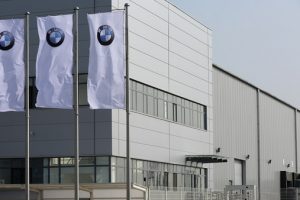 BMW has opened its fifth regional distribution centre (RDC) in China, completing the preliminary stage of its aftersales logistics network in the country. The 15,000 sq.m facility is located in the economic and technological zone in Shenyang. Further work during a planned second stage will add 25,000 sq.m.
BMW has opened its fifth regional distribution centre (RDC) in China, completing the preliminary stage of its aftersales logistics network in the country. The 15,000 sq.m facility is located in the economic and technological zone in Shenyang. Further work during a planned second stage will add 25,000 sq.m.
The facility joins existing ones in Shanghai, Beijing, Chengdu and Foshan. Altogether, the network has a storage capacity of 80,000 parts and accessories.
The latest centre will be fed with parts from BMW’s joint venture plant in Teixi with Chinese carmaker Brilliance Automotive. BMW Brilliance Automotive said the facility would be able to respond to increasing customer demand in the north-east region.
“It will provide an efficient logistics support for comprehensively increasing customer satisfaction,” said Claus Eberhart, vice-president of aftersales, BMW Brilliance Automotive. “The new RDC will reduce the time of order response and parts delivery for the dealers in the north-east region and ensure the quality of parts, as well as supporting dealers in other regions in China to provide a higher level of customer experience.”
At full output, the RDC in Shenyang will process more than 1,800 lines of dealer orders per day, meeting an order replenishment time of 24 hours to reduce customer waiting time. According to the company, the RDC will plan order and distribution routes according to dealer needs to accomplish same-day delivery, as well as a 3.5-hour same-city service. It will also coordinate with other BMW RDCs in China to meet the needs of dealers all over the country.
The Shenyang facility will be linked by an international rail route, as is BMW's Teixi plant, expanding on its existing sea and air delivery modes.
DB Schenker will provide the transport services from the centre to dealers and service points in the north-east of China but is not running the contract logistics services at the facility, which remains under the remit of BMW Brilliance Automotive.
“This will integrate the north-east region with the “One Belt, One Road” strategy via the Trans-Siberian Railway to form an integrated land, maritime and air logistics system for efficient resource allocation and common development along the Silk Road economic belt,” said the carmaker in a statement.

























![Global[1]](https://d3n5uof8vony13.cloudfront.net/Pictures/web/a/d/s/global1_726550.svgz)










